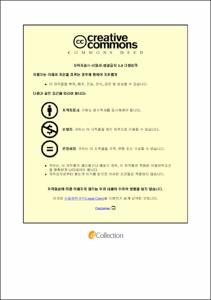디지털 패션 공정기술의 효과성에 대한 사례연구
- Abstract
- In response to 4th industrial revolution, digital technologies such as artificial intelligence, big data, and virtual reality are converging with technologies from various fields to accomplish rapid economic development in all industrial fields and suggest new paradigm of social change.
In manufacturing-based fashion industry, digital technology is rapidly developed in each stage from product planning to design, sample making, order production, tailoring, sewing, and distribution.
3D virtual clothe engine solution, CLO, show unique and excellent performances in the world and it innovatively reduces the inconvenient processes and expense of making actual sample. Also, virtual dressing program enables communication between designers and buyers regardless of time and place and it is largely contributing on competiveness of fashion companies.
In response, this study seeks to suggest status of existing clothes manufacturing process, need for development of digital fashion technology, and future development plans by examining the present and future of digital manufacturing process.
This study applied national research and development project’s result performed between 2016 to 2019 on Company A’s system and conducted comparative analysis on working time of general manufacturing method and digital manufacturing method.
After applying the system, the system showed following improvements in work efficiency
① In graphic and pattern work, the digital system allowed easier and faster correction compared to existing works.
② By replacing initial sample to virtual sample, the lead time was greatly reduced.
③ In case of complicated style, the number of sample work reduced from 3 times to once. This decreased sample work time by 560 minutes and reduced sample expense.
④ In analysis of lead time, existing system required 1,814 minutes for outer work. In utilizing the platform, the lead time reduced by 50% from the total lead time.
⑤ In total lead time for each item, the lead time reduced by 69% for t-shirts, 68% for dress, 71% for pants, and 66% for outer.
⑥ Including the waiting time (tailoring and sewing time, e-mail work, logistics time, etc.) involved in general manufacturing process steps, this shows that the digital system reduced considerable amount of time and expense.
For development of fashion industry in the future, it is necessary for manufacturing field to establish platform and it requires quick support and response from government and local government.
- Issued Date
- 2020
- Awarded Date
- 2020. 8
- Type
- Dissertation
- Publisher
- 부경대학교
- Affiliation
- 부경대학교 기술경영전문대학원
- Department
- 기술경영전문대학원 기술경영학과
- Advisor
- 김영진
- Table Of Contents
- Ⅰ. 서 론 1
1. 연구의 배경과 목적 1
Ⅱ. 이론적 배경 4
1. 패션산업 4
2. ICT의 발전과 패션산업의 디지털화 6
3. 패션산업의 온라인 8
4. 선행연구 10
Ⅲ. 의류제조 공정의 비교 15
1. 자료수집 15
2. 의류제조 공정 15
3. 디지털 의류제조 공정(기획-디자인-생산준비) 17
Ⅳ. 디지털제조 공정 사례 27
1. 현장 배경 및 사례 27
2. 디지털제조 공정 효과 35
Ⅴ. 결론 37
1. 요약 및 결론 37
2. 연구의 한계점과 향후 연구의 방향 39
참고 문헌 40
1. 국내·외 문헌 40
2. 보고서 및 기타 41
- Degree
- Master
- Files in This Item:
-
-
Download
 디지털 패션 공정기술의 효과성에 대한 사례연구.pdf
기타 데이터 / 1.38 MB / Adobe PDF
디지털 패션 공정기술의 효과성에 대한 사례연구.pdf
기타 데이터 / 1.38 MB / Adobe PDF
-
Items in Repository are protected by copyright, with all rights reserved, unless otherwise indicated.